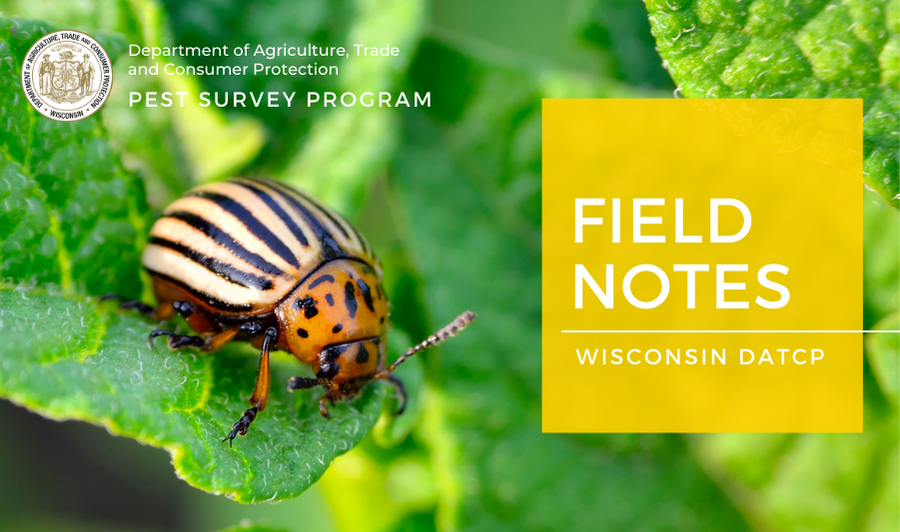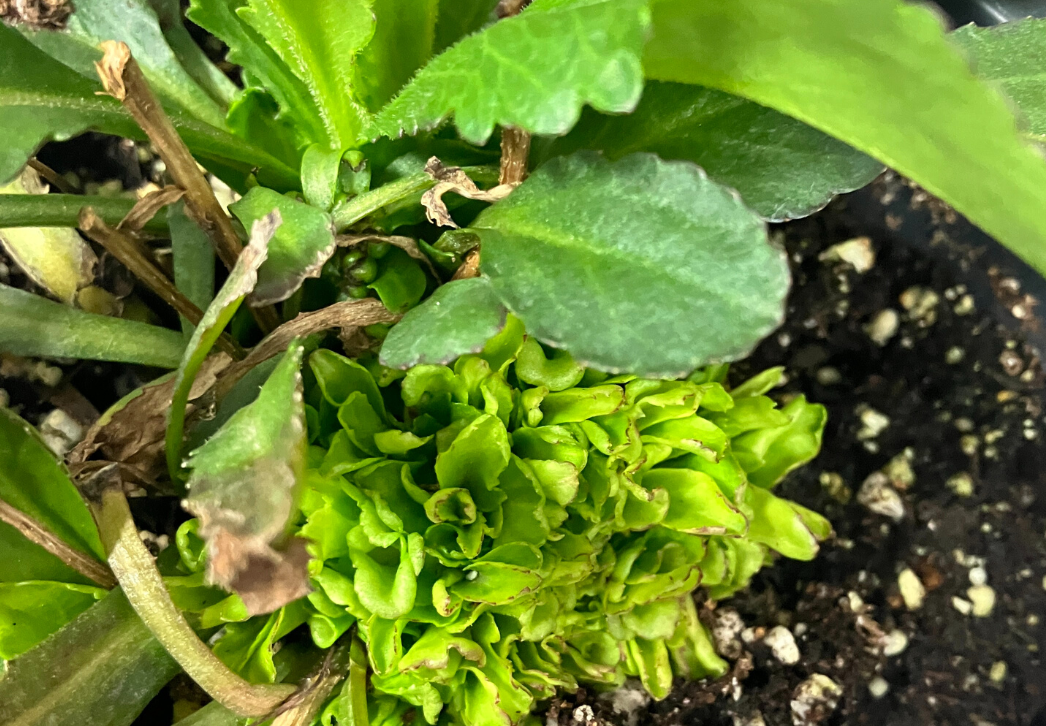|
   Dry weather persisted across the state this week as the haze from Canadian wildfire smoke filled the sky and prompted the National Weather Service to issue air quality alerts. Planting of field crops neared completion in most areas, while temperatures were at or slightly below average for early June. In northern Wisconsin, low temperatures fell to the 30s on Thursday morning, allowing frost to develop in locations north of Highway 64.
According to the USDA National Agricultural Statistics Service (NASS), crop condition ratings decreased from the previous week due to lack of rain. Ratings for the state’s corn acreage dropped 10 percent from last week, with 72 percent currently rated as “good to excellent” and 24 percent rated “poor to fair.” Similarly, winter wheat condition decreased six percent from the week before, and 75 percent of the crop is currently rated good to excellent. Condition ratings for alfalfa, oats, and pastures also declined by a few percentage points.
The latest U.S. Drought Monitor shows much of the northern two-thirds of the state has become abnormally dry since last month, while a wide swath of southern Wisconsin is in moderate drought. Growers statewide are hoping that the rain chances in the forecast for the weekend ahead materialize and deliver much-needed precipitation to struggling crops, lawns, and gardens.
__________________________________
|
|
A soybean gall midge alert notification issued by the University of Nebraska Lincoln-ARDC indicates that emergence of adult gall midge flies is underway in northwest Iowa. The report states that, “Two male soybean gall midges were captured at the ISU Northwest Research Farm near Sutherland on Tuesday, June 6. This is about one week earlier than the previous first captures in Iowa.” Adult midges have also been observed at monitoring sites in Nebraska since May 31.
Soybean gall midge is a relatively new pest to the Midwest and has not yet been found in Wisconsin. The closest known infestations were confirmed in Rice County in south-central Minnesota, just 70 miles from western Wisconsin. Soybean producers, crop scouts, and crop advisors are strongly encouraged to watch for signs of soybean gall midge this summer, especially along the edge rows of fields. Scouting can begin once soybeans reach the V2 stage at which plants begin to develop stem fissures or cracks and become susceptible to infestation.
Suspected soybean gall midge infestations can be reported to the DATCP Pest Hotline at datcppesthotline@wi.gov. More information is available on the Soybean Gall Midge Alert Network website by clicking the button below. |
|
 __________________________________
|
|
 Leafy gall disease | S. Fieweger DATCP
  The Plant Industry Bureau Laboratory recently confirmed leafy gall disease, caused by the bacterium Rhodococcus fasciens, on the Shasta daisy variety ‘Daisy May’ and on petunia. Both plants exhibited classic leafy gall symptoms, including masses of tightly packed buds or shoots fused at the base of a stem, witches’ brooms, and abnormal flattened growth (fasciation). These symptoms may occur at the base of the plant or on stems and branches.
Many different ornamentals, vegetables, field crops, and weeds are susceptible to leafy gall disease. Herbaceous plants often infected are aster, dahlia, campanula, geranium, heuchera, hosta, iberis, leucanthemum, monarda, nemesia, petunia, phlox, veronica, and viola. Transmission to new plants occurs by infected soil, seed, propagation material, insect vectors, and water. Disease transmission via infected propagative material and water is most common.
There are no known curative treatments for leafy gall disease. The best management strategy is prevention. If the R. fasciens bacterium is confirmed through lab testing, growers should follow strict sanitation practices and rogue out symptomatic plants to control spread of the disease.
|
|
 __________________________________
|
|
|
The Pest Survey Program at DATCP conducts surveys for plant pests that threaten Wisconsin’s agriculture and natural resources. Some of our surveys are targeted at specific exotic insects, pathogens, nematodes, and weeds identified as national priority pests. These “early detection” activities are accomplished with funding provided through USDA Cooperative Agricultural Pest Survey (CAPS) Program and Plant Protection Act (PPA 7721) agreements.
This season, our program is carrying out early detection surveys in crop, orchard, garden, forest, and industrial environments for 29 different plant pests. The survey targets are as follows:
-
Fruit pests: blueberry maggot (Rhagoletis mendax), European cherry fruit fly (Rhagoletis cerasi), summer fruit tortrix moth (Adoxophyes orana), and velvet longhorned beetle (Trichoferus campestris).
-
Vegetable pests: leek moth (Acrolepiopsis assectella), potato spindle tuber viroid (PSTVD), swede midge (Contarinia nasturtii), and tomato brown rugose fruit virus (ToBRFV).
-
Small grains pests: cereal cyst nematodes (Heterodera filipjevi and H. avenae), cucurbit beetle (Diabrotica speciosa), false root-knot nematode (Naccobus aberrans), Mediterranean cyst nematode (Heterodera latipons), sunn pest (Eurygaster integriceps), wheat blast (Magnaporthe oryzae Triticum pathotype), and two exotic snails (Cernuella virgata and Cochlicella).
-
Forest pests: black fir sawyer (Monochamus urussovii), black spruce beetle (Tetropium castaneum), brown spruce longhorned beetle (Tetropium fuscum), European pine shoot moth (Rhyacionia buoliana), European spruce bark beetle (Ips typographus), large pine weevil (Hylobius abietis), nun moth (Lymantria monacha), pine-tree lappet (Dendrolimus pini), Siberian silk moth (Dendrolimus sibiricus), six-toothed bark beetle (Ips sexdentatus), spotted lanternfly (Lycorma delicatula), and walnut twig beetle (Pityophthorus juglandis).
Several of these pests, such as blueberry maggot, swede midge, and velvet longhorned beetle, have been detected in Wisconsin in recent years, but information on their distribution and potential impact is lacking. Most of the other organisms listed have not yet been found in the state. Results of our 2023 detection surveys will be shared in Field Notes and made available at the end of the year on the NAPIS Pest Tracker website.
|
|
 __________________________________
|
|
|
|
|